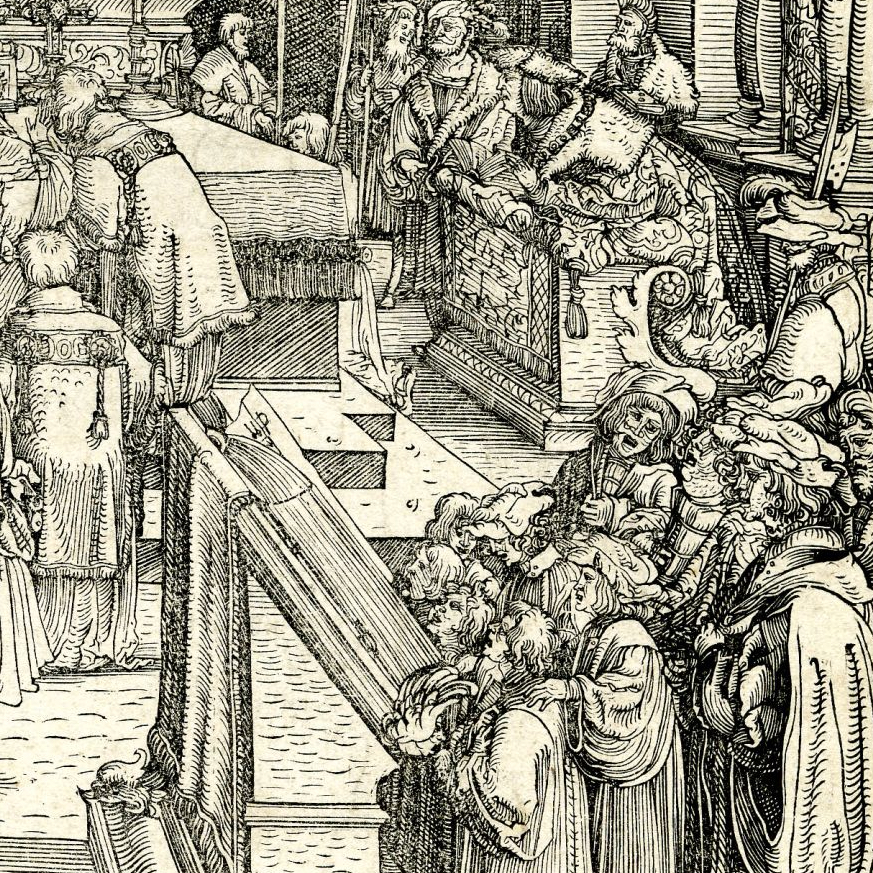Singing Maximilian – Musical and Cultural Networks at the Court and Beyond



Singing Maximilian – Musical and Cultural Networks at the Court and Beyond
SFB F9200 ManMax, Teilprojekt 04
PI: Univ.-Prof. Dr. Birgit Lodes.
Team: DDr. Grantley McDonald
Project duration: 2023–2027
Singing Maximilian, a subproject of the FWF Special Research Cluster Managing Maximilian (ManMAX), deals with the role of music and musicians at the court of Maximilian I Habsburg (1459–1519). Rulers, both now and through history, need to project and legitimate their authority and charisma through all means possible. Unlike his father Frederick III, Maximilian travelled regularly throughout his territories, and impressed his personality on their inhabitants through his martial bearing; through his appeal to ancient ideals of chivalry; through the skilful use of pictorial imagery in paint, stone and print; through literary performances; and through music.
In a world before sound recordings, any public music attracted attention. Around 1500, complex polyphonic music, especially when performed by celebrated singers or instrumentalists, was even more striking through its rarity. Rulers such as Maximilian used music to impress through sheer sonic splendour, whether at their residence or on progress around the Empire.
But for Maximilian, music was not just empty show to impress others. The musicians at his court had many functions. Trumpeters, pipers and drummers were an indispensable part of the army, keeping tempo during marches and communicating commands over the din of battle. Musicians participated in court entertainments, from jousts and dances to the performance of songs in the ruler’s chamber. The chapel had been part of the imperial court from the time of Charlemagne. Its members were educated and literate, which meant that they could also perform clerical tasks. Most were clergy, and besides their roles as court chaplains, they acted as parish priests, members of the chapters of collegiate or cathedral churches, or even as bishops. They could therefore act as intermediaries between Maximilian and important ecclesiastical foundations far from the court. Some were also experienced diplomats, and could represent Maximilian’s interests at other courts, from Milan to Torgau. Some of the few members of the chapel who were not ordained were married. The wife of Maximilian’s court composer Henricus Isaac probably looked after the choirboys whom Maximilian sent to Vienna to sing in the castle chapel, thus performing a task – though unrecorded in the pay records and thus virtually invisible – without which the musical establishment envisaged by Maximilian could not have operated so well. Relatives of some members of the chapel were also employed at the court, often in administrative positions. The chapel thus served as a hub for attracting talented members of families already represented at court, thus enmeshing networks of patronage with networks of kinship.
This subproject thus seeks to investigate much more than simply the music that was performed at court or identify musical sources that can be associated with Maximilian’s court or his immediate circle, though these are also amongst its aims. Rather, in line with the prosopographical focus of ManMax, it seeks to embed the musical staff of the court within their intersecting roles and spheres of activity, in order to bring music more closely into the heart of the investigation of Maximilian’s government.
Singing Maximilian is a subproject of the special research area Managing Maximilian (1493–1519) – Persona, Politics, and Personnel through the Lens of Digital Prosopography (Acronym: ManMAX) under the direction of Andreas Zajic (History, Austrian Academy of Sciences). Other subprojects at the University of Vienna are led by Elisabeth Klecker (Neo-Latin), Christina Lutter (History and Gender studies), Stephan Müller (German Languages); further project leaders are: Christoph Metzger (Albertina Vienna), Stefan Krause (Kunsthistorisches Museum, Rüstkammer), Georg Vogeler (University of Graz, Digital Humanities).
